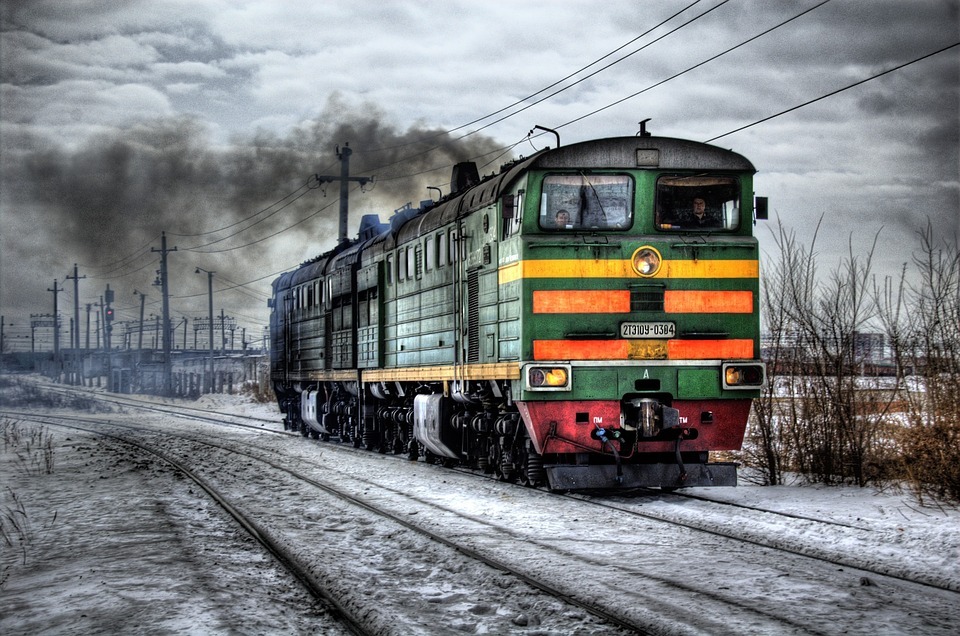In this article, I will explain the different modes of transportation and as well as their advantages or disadvantages…
Transportation ensures time and place utility. It results in the movement of goods from one place to another place thus making the product available through the customer at the right time. There can be various modes of transport or transportation.
Modes of Transportation-
The modes of transport include various types of factors or methods to transfer the goods or product from one place to another place. The modes are:-
- Roadways Transportation.
- Railways Transportation.
- Water Transportation.
- Air Transportation.
- Pipelines Transportation.
1. Roadways Transportation:

A road is an identifiable route way or path between two or more places. This mode of transport helps to transfer the goods from one place to another place by road through various methods like auto, buses, trucks, cargos, and other suitable factors.
In road transport, the chances of an accident are very high and it is also very risky.
Advantages of Road Transport:
(i) It is very flexible in nature.
(ii) It helps to facilitate the movement of goods even in remote areas.
(iii) It provides alternatives in the form of car, rickshaw, auto, cars, bus, trucks, and so on.
(iv) It is good for transporting perishable products.
(v) It requires low capital investments.
(vi) It is very suitable for a short distance journey.
Disadvantages of Road Transport:
(i) It is not suited for long distance as it is not economical.
(ii) Slow as compared to railways.
(iii) Goods can be destroyed/damage due to specks of dust and pollutions.
(iv) It is time-consuming.
(v) Accidents and Breakdowns.
2. Railways Transportation:

It is a means of transport in which the goods are transferred from one place to another place and as well as transfers the passenger from one place to another destination. It is preferred due to high speed. Invariance to road transport, where vehicles run on a flat road or surface, rail vehicles are directionally managed by the rail tracks on which they run.
Rail transport helps to provide administrative facilities to the government. The public servants and defense forces run their mobility from the railways.
Advantages of Railways Transportation:
(i) It is economical for long distances because it can easily cover all area of states and cities.
(ii) This means of transport is very faster than roadways.
(iii) Most suitable for carrying a bulky amount of goods and products.
(iv) It provides proper protection from exposure to sun and dust pollutions.
(v) It is the most dependable means of transport.
(vi) It is the very safest means of transport.
(vii) Rail transport helps to provide employment opportunities to both skilled and unskilled individuals.
Disadvantages of Railways Transportation:
(i) Huge capital required for construction maintenance.
(ii) It is not suitable for hilly areas.
(iii) It is not flexible in nature.
(iv) The cost and time of terminal operations are the major disadvantages of rail transport.
(v) Monopoly in nature.
(vi) It consists much time for booking of goods through the comparison of road transport.
3. Water Transportation:

It involves the movement of goods through oceans and seas. There are more than 365 ports in India with Vishakapatnam contributing to maximum portion traffic. It can be categorized into three several categories:-
- Aqueducts, which includes tunnels and canals.
- Containers like tank car, tank ship, and tank truck.
- Towing, it is very useful to pull a large water bag or an iceberg.
In water transport, the weights of goods are very large in comparison to other means of transports. It plays a very crucial role in the development of exports and imports of goods in the different parts of the world.
Advantages of Water Transportation:
(i) It is the very cheapest or easiest means of transportation.
(ii) Goods in bulk are transported.
(iii) It promotes foreign or international trade.
(iv) It can easily carry a huge quantity of goods such as timber and coal.
(v) In comparison to other transport, the risks capacity is very low.
Disadvantages of Water Transportation:
(i) One of the drawbacks is there is a delay in the movement of goods from one place to another.
(ii) Performance is affected by seasonal variations.
(iii) It can be used in a limited area of operations because it can only run on seas or oceans.
(iv) Water transport is very unsuitable for small businesses because it carries a small number of goods.
4. Air Transportation:

The distinct advantage of air transport is speed and suitability. It is very useful for less working goods with a high value of the price. Air transport is also known as aviation.
The important characteristic of air transport is that does not need a particular surface track for its working operations. It is the fastest means of transportation. But the cost of operations is very high according to other modes.
Advantages of Air Transportation:
(i) Fastest means of transportation.
(ii) Useful moving the goods in the amount of bulk.
(iii) Each and every area of accessible.
(iv) Vital for national security and defense.
(v) Very useful in earthquakes and other floods.
(vi) It provides an efficient, regular, and quick service.
(vii) It is very suitable for emergency services.
Disadvantages of Air Transportation:
(i) The large capital investment needed.
(ii) Not suitable for working goods.
(iii) May be affected by rains.
(iv) Risks of accidents are highest.
(v) This mode of transport requires a specialized skill and a high degree of training for its working operations.
5. Pipelines Transportation:

Pipelines transportation is used for sending the liquids and gases from one place to another place. Through this means of transport, we can also send chemicals, biofuels, and natural gases.
Advantages of Pipelines Transportation:
(i) They are very flexible in transporting liquids and gases.
(ii) It consumes low energy power.
(iii) It needs a limited area of maintenance.
(iv) Pipelines are very safe and accident-free transport.
Disadvantages of Pipelines Transportation:
(i) It is not flexible in nature.
(ii) It is restricted in a limited area of work.
(iii) Difficult to make security arrangements for this transport.
So, these are the five points or brief explanation on the topic of modes of transportation…



I.like the notes